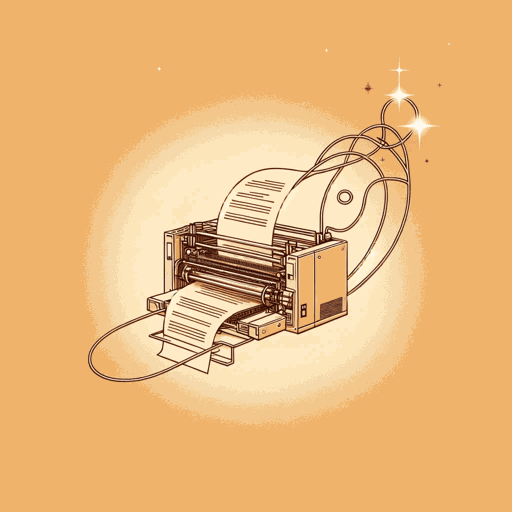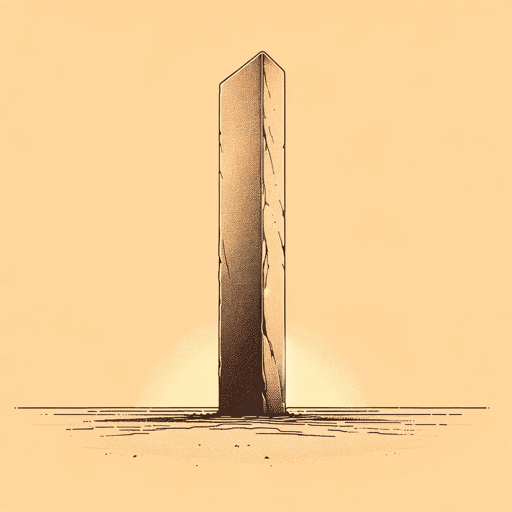58 pages • 1 hour read
Arthur C. ClarkeThe Nine Billion Names of God
Fiction | Short Story Collection | Adult | Published in 1967A modern alternative to SparkNotes and CliffsNotes, SuperSummary offers high-quality Study Guides with detailed chapter summaries and analysis of major themes, characters, and more.
Summary and Study Guide
Overview
The Nine Billion Names of God is a collection of science-fiction short stories published in 1974 by the English author Arthur C. Clarke. Most of the stories in the collection were written in the late 1940s and ’50s. One of the most successful and prolific early science fiction writers, Clarke wrote about space exploration, scientific inventions such as satellites, and aliens long before humans even landed on the moon. His short story “The Sentinel,” which is included in this collection, was the basis for the landmark 1968 film 2001: A Space Odyssey. Clarke’s writing helped popularize science, for which he won UNESCO’s Kalinga Prize. Many of his fictional ideas about technology came true, giving his work a prescient quality.
This guide refers to the 1987 Signet edition.
Plot Summary
The collection begins with an introduction from the author in which he states that for various reasons, the following stories are the favorites of all that he has written. They range from serious warnings about the future of Earth to humorous farces. Below is a summary of the most influential or significant stories in the collection.
“The Nine Billion Names of God” follows a group of Tibetan monks who are trying to list out all the possible combinations of letters in a special alphabet they created. Once they have successfully listed them all, the universe as they know it will come to an end. To speed up their work, they enlist the help of two scientists and their computer. The computer prints out the letter combinations at an incredible speed. The scientists think the monks are crazy, but as soon as the computer prints its last page, the stars in the sky go out, signaling the end of the world.
In “I Remember Babylon,” a Russian operative plans to pipe pornography into every American home from a satellite orbiting Earth, in order to slip propaganda in between sex scenes. The narrator is concerned that scientific progress will be used against Americans to influence them in dangerous ways.
“Rescue Party” is one of the only stories in which Clarke describes the human race as potentially superior to aliens. A team of aliens from different planets join together to rescue any signs of life from a futuristic Earth which has been destroyed by the sun. When they arrive, they discover radio towers that seem designed for interplanetary communication but can find no signs of life. They assume that the human race burrowed into the center of the Earth and is destroyed. They are shocked to realize that all of humanity boarded highly sophisticated spaceships before Earth was destroyed.
“The Curse” offers a sci-fi explanation for the seemingly suicidal behavior of lemmings: Long ago, the creatures were inhabited by an alien life force. This alien split into two beings and agreed to meet each year in the same location to share their discoveries. The story is told in intricate detail, creating pathos for the poor alien that is stuck waiting for the lemmings to evolve intelligence, only to be driven year after year to their death somewhere in Norway.
“Summertime on Icarus” demonstrates the extreme nature of space travel. As an astronaut prepares to burn to death inside his suit, he ponders the nature of man and what drives him to seek out such adventures. He compares himself to those who were first drawn to climbing Everest. The story’s title references the Greek legend of Icarus, a boy who received the gift of flight but failed to heed warnings about flying too close to the sun.
“Out of the Sun” portrays a godlike being who is born directly from the center of the sun. The narrator experiences a paradigm shift as he watches what he thinks is an amoeba morph into something that could just as easily be a divine entity. He realizes that humans have been foolish to consider themselves superior beings and begins to wonder if they may actually be the lowest life form in the Universe.
“The Sentinel” is the story upon which the Stanley Kubrick film 2001: A Space Odyssey is based. A group of astronauts are stationed on the moon, studying its features. One of them spots something shiny and distinctly unnatural. He climbs a tall mountain and finds that it is a pyramidal object, surrounded by a protective forcefield and a thick layer of dust. It takes them 20 years to figure out how to penetrate the forcefield. When they do, they discover it is a sentinel, or beacon, set up long ago by a superior race of intelligent beings. The assumption is that the aliens saw Earth and knew intelligent life would form on the planet, so they set a sentinel on the moon to alert them when humans achieved space travel and could break through the forcefield. The story ends with the question of whether or not the aliens coming for them will be friend or foe.
The final story in the collection, “The Star,” invokes the philosophical debate between science and religion. A Jesuit priest who is also an astronaut experiences a crisis of faith when he discovers the destruction of an advanced, peaceful civilization on another planet. The planet’s sun exploded, killing everything on it. However, before the explosion, the people took care to build a vault which perfectly preserved the best of their civilization. On the way home from surveying this vault, the priest calculates the date of the supernova’s explosion: It corresponds with the Star of Bethlehem which appeared the night Jesus was born on Earth. The priest cannot fathom why God would be so cruel as to destroy one civilization just to mark the birth of Jesus with a new star. He wonders if his scientific colleagues are right after all about the Universe operating at random. He also wonders if God even exists at all.
Related Titles
By Arthur C. Clarke






